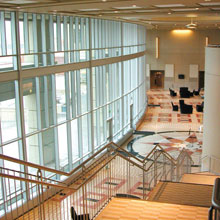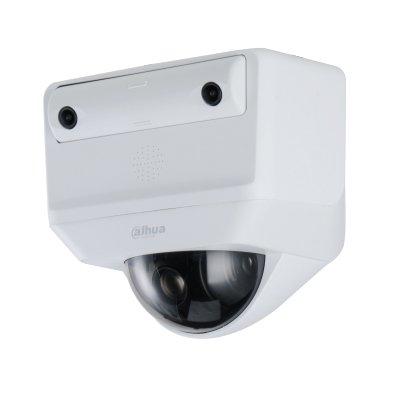 |
| P2000 systems are now an Aurora standard for its facilities’ building and security management systems |
Founded in 1891, the City of Aurora, Colorado has grown from a small town on the plains to a large urban center with more than 300,000 residents. In its continued growth, Aurora is leveraging Johnson Controls building management and security system technologies, service capabilities and energy efficiency solutions to effectively deliver services to citizens while remaining a fiscally strong and well-managed city.
Aurora is now the third largest city in Colorado and a business leader in key growth industries such as biotechnology, aerospace and high technology. With a vibrant and professional business climate and first-rate educational institutions, development opportunities are abundant.
Even though Aurora has enjoyed significant growth, the city’s facility infrastructure did not grow proportionally. Faced with operating more than 100 facilities with a limited staff, the city sought to increase the operational efficiency of its Facilities Management Division by using automation and standardisation strategies to streamline operations and maintenance processes. The strategies were focused on HVAC, building automation, security and fire alarm systems.
Starting with a new municipal center in 2002, Johnson Controls has been designing, building and servicing these systems in both new and existing facilities, citywide. Most recently, Aurora contracted Johnson Controls to implement $4 million in energy efficiency and capital improvement projects in facilities on its main campus at the Aurora Municipal Center. These projects are aimed at reducing energy consumption, and improving building environments and operational efficiencies, while providing top-quality customer service.
Municipal center sets new standards with systems integration
“During the one-year audit process, Johnson Controls identified 120 facility improvement measures (FIMS)” |
The Aurora Municipal Center (AMC) is the heart of the AMC Campus, a massive development and redevelopment project implemented by the city. The facility consolidated 28 municipal departments once scattered throughout the city. “Construction of the AMC, the City’s largest building, gave us the opportunity to adopt baseline standard systems that could be retrofitted into our existing buildings, and in future developments,” says Russ Grant, manager of the Facilities Management Division. “Johnson Controls was more than willing to help us establish those baseline systems, which helped keep initial costs down.”
Four firms competed for the controls integration contract. Johnson Controls ability to provide systems integration, implementation, maintenance and training, and to stay on budget was key criteria in the City’s selection.
Johnson Controls integrated all of the major building systems and equipment at the AMC. A common Web-based user interface accommodates the addition of existing and new buildings. This approach provided the City and the AMC general contractor with a single source of responsibility for all the building systems, and avoided markup costs associated with management of multiple sub-contractors. Because the City needed to move into the new facility quickly, it chose to implement the project with a technology contracting approach. Johnson Controls worked closely with the mechanical, electrical and security engineers and the general contractor, to develop specifications for the project that were customized around Aurora’s desire for fully integrated systems.
“The AMC was a fast-track project. The first systems were brought online in 18 months, about six weeks ahead of schedule,” notes Grant. The technology contracting approach involved regular meetings from design right through construction. “Johnson Controls took direction from our general contractor, but held themselves accountable by following up to ensure that what was actually installed is what was contracted for. Although efforts were made to avoid up-front costs, Johnson Controls maintained a focus on long-term operations, as well, which will minimise costs down the road,” adds Grant.
The AMC houses the Facilities Management Control Center where facilities personnel can monitor and control multi-vendor HVAC and lighting equipment at the AMC, and other connected facilities, via the Johnson Controls Metasys® building management system. Other key systems include a central fire alarm system and a Johnson Controls P2000 security management system, both of which have a BACnet integration to the Metasys system.
Although a customer-friendly environment is desired by the City, it is important that select buildings can be locked-down if necessary. “The key to the Johnson Controls security management system is that it meets these specific needs and is scaleable, allowing the addition of new features and facilities,” notes Grant. The P2000 system is used in 22 buildings throughout the city and includes card access, video surveillance, emergency alarm management communications and perimeter security.
 |
| Johnson Controls has designed and built building automation and security management systems for an additional 14 new facilities |
The Metasys and P2000 systems are now an Aurora standard for its facilities’ building and security management systems in new construction or retrofits. Since the AMC was completed, Johnson Controls has designed and built building automation and security management systems for an additional 14 new facilities which house police stations, 911 dispatch, fire stations, neighborhood services, and libraries among others. Five existing buildings have also been integrated for HVAC controls. “Whether Johnson Controls is working directly for us or through our general contractor on construction projects, we bring them in at the design stage to help us determine the best way to apply the various technologies,” says Grant.
Optimising building systems
Initially, through a one-year performance-based service agreement, Johnson Controls helped to maximise the city’s investment in the AMC by ensuring the systems were functioning at the highest level. This was accomplished, in part, by providing full systems training to facilities management personnel. In addition, by using key performance indicators, Johnson Controls established baselines against which the performance of key systems can be measured. Johnson Controls then used performance indexing and computerised maintenance management software to optimise building systems operation and manage the maintenance tasks. As a result, annual operational savings of $15,000 have been achieved at the AMC since it was first occupied.
Johnson Controls continues to optimise building controls through a five-year, renewable planned service agreement. The agreement includes preventative maintenance and consultative services on the Metasys system in place at facilities throughout the city.
For Grant, training and systems optimisation also provide benefits beyond savings. “These programs ensure that we can continue to make the best use of our staff by taking full advantage of the integrated systems. This results in a reduction in service calls and a better response time to the calls we do receive. In fact, often we are able to fix problems before building occupants are even aware there may be an issue,” says Grant.
Relationship expands with focus on energy efficiency and sustainability
As Aurora continues to grow, its leaders understand the importance of energy efficiency in maintaining a fiscally strong and environmentally conscious city. In a technology contracting retrofit project, Johnson Controls is making capital improvements in all facilities on the AMC campus in a phased program to replace outdated systems, maximise energy efficiency and improve occupant comfort.
The project began with an energy and capital improvement audit of the buildings on the campus, which include the Municipal Justice Center, Detention Center, Central Library, Police Headquarters and the History Museum. “During the one-year audit process, Johnson Controls identified 120 facility improvement measures (FIMS),” states Grant. “Based on available budget and potential savings, the FIMS were prioritized into phases for implementation. The first phase of improvements, done in the Municipal Justice Center (MJC), have reduced energy consumption by approximately 20 percent. We know we’ve achieved savings in other facilities just by looking at the utility bills, but they have not been quantified yet.”
“The key to the Johnson Controls security management system is that it meets these specific needs and is scaleable, allowing the addition of new features and facilities” |
Improvement measures in the MJC included replacement of existing equipment with new high efficiency equipment, including: a cooling tower, two boilers, two 400 ton York® chillers and installation of variable frequency drives. In addition, a new chilled water line was extended to the nearby History Museum to use excess capacity in the MJC central plant and to allow removal of an old inefficient stand alone 75 ton air-cooled chiller. Mechanical rooms in three buildings were reconfigured to operate with new high efficiency condensing type boilers. Furthermore, pneumatic controls were replaced with direct digital controls and the Metasys system was expanded to optimise both heating and cooling systems.
Discussions are in progress regarding energy audits for additional facilities. According to Grant, in 2007, the Aurora City Council also passed a resolution requiring that all new construction and major building renovations adhere to the U.S. Green Building Council’s Leadership in Energy and Environmental Design (LEED®) Gold standard. “This provides opportunities for the City and Johnson Controls to review how we can further save energy and implement environmentally friendly practices,” says Grant. “As well as increase the value of the facility improvement measures that we’ve already put in place.”
















